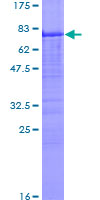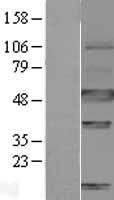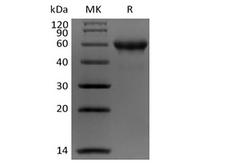order histories, retained contact details for faster checkout, review submissions, and special promotions.
Forgot password?
order histories, retained contact details for faster checkout, review submissions, and special promotions.
Location
Corporate Headquarters
Vector Laboratories, Inc.
6737 Mowry Ave
Newark, CA 94560
United States
Telephone Numbers
Customer Service: (800) 227-6666 / (650) 697-3600
Contact Us
Additional Contact Details
order histories, retained contact details for faster checkout, review submissions, and special promotions.
Forgot password?
order histories, retained contact details for faster checkout, review submissions, and special promotions.
CA9 / Carbonic Anhydrase IX
carbonic anhydrase IX
Carbonic anhydrases (CAs) are a large family of zinc metalloenzymes that catalyze the reversible hydration of carbon dioxide. They participate in a variety of biological processes, including respiration, calcification, acid-base balance, bone resorption, and the formation of aqueous humor, cerebrospinal fluid, saliva, and gastric acid. They show extensive diversity in tissue distribution and in their subcellular localization. CA IX is a transmembrane protein and is one of only two tumor-associated carbonic anhydrase isoenzymes known. It is expressed in all clear-cell renal cell carcinoma, but is not detected in normal kidney or most other normal tissues. It may be involved in cell proliferation and transformation. This gene was mapped to 17q21.2 by fluorescence in situ hybridization, however, radiation hybrid mapping localized it to 9p13-p12.
| Gene Name: | carbonic anhydrase IX |
| Synonyms: | CA9, CAIX, Carbonate dehydratase IX, Carbonic anhydrase IX, CA-IX, Carbonic dehydratase, G250, MN, Membrane antigen MN, p54/58N, RCC-associated antigen G250, RCC-associated protein G250, Carbonic anhydrase 9, PMW1, CA IX |
| Target Sequences: | NM_001216 NP_001207.2 Q16790 |
Publications (44)








If you do not find the reagent or information you require, please contact Customer.Support@LSBio.com to inquire about additional products in development.









